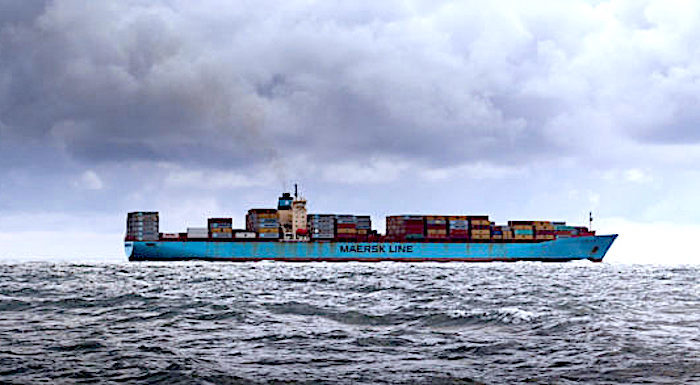
© Unknown
Explorers and navigators have long searched for a way to move ships through the Arctic Circle as find a faster way to move goods between the Atlantic and the Pacific without having to go around either Asia or South America. Groups of people hunted for the fabled Northwest passage through North America for decades. The problem, of course, is that the Arctic contains too much ice.
Over the past few years, however, ice levels in the Arctic have been
hitting record lows thanks to climate change, and while its effects are almost universally negative,
one benefit is opened northern sea routes. Over the past month, a container ship sailing from Eastern Russia is pioneering a new Arctic route by being the first such ship to cross the Arctic Ocean.On August 23, the container ship Venta Maersk left the Russian port of Vladivostok and headed to Bremerhaven in Germany. Normally, a trip like that would take the Venta Maersk through the Suez Canal on a 34 day trip. Instead, the ship will sail through the sea north of Russia on a route that will only take 23 days.
Last week, the Venta Maersk passed through the Sannikov Strait, the narrowest and most hazardous part of its journey, and is expected to arrive in Germany by the end of the week. Once it arrives, it will become the first container ship to complete a successful route through the Arctic Circle.
However, Maersk says that this doesn't mean container ships will be flocking to the Arctic anytime soon.
The route is only open for three months from July to October, and any ships looking to sail in this region have to be specially outfitted to sail in ice-filled water. These extra considerations make the route less profitable than it might be otherwise."Currently, we do not see the Northern Sea Route as a commercial alternative to our existing network, which is defined by our customers' demand, trading patterns and population centers," said Maersk in a statement.
But as climate change gets more severe, the Arctic Circle might become more passable. Over the next few decades ice levels in the Arctic are expected to drop significantly lower, so this route might become more popular. In a world of negative climate change news, this might be the only good thing we have to look forward to.
Comment: According to the Washington Post: